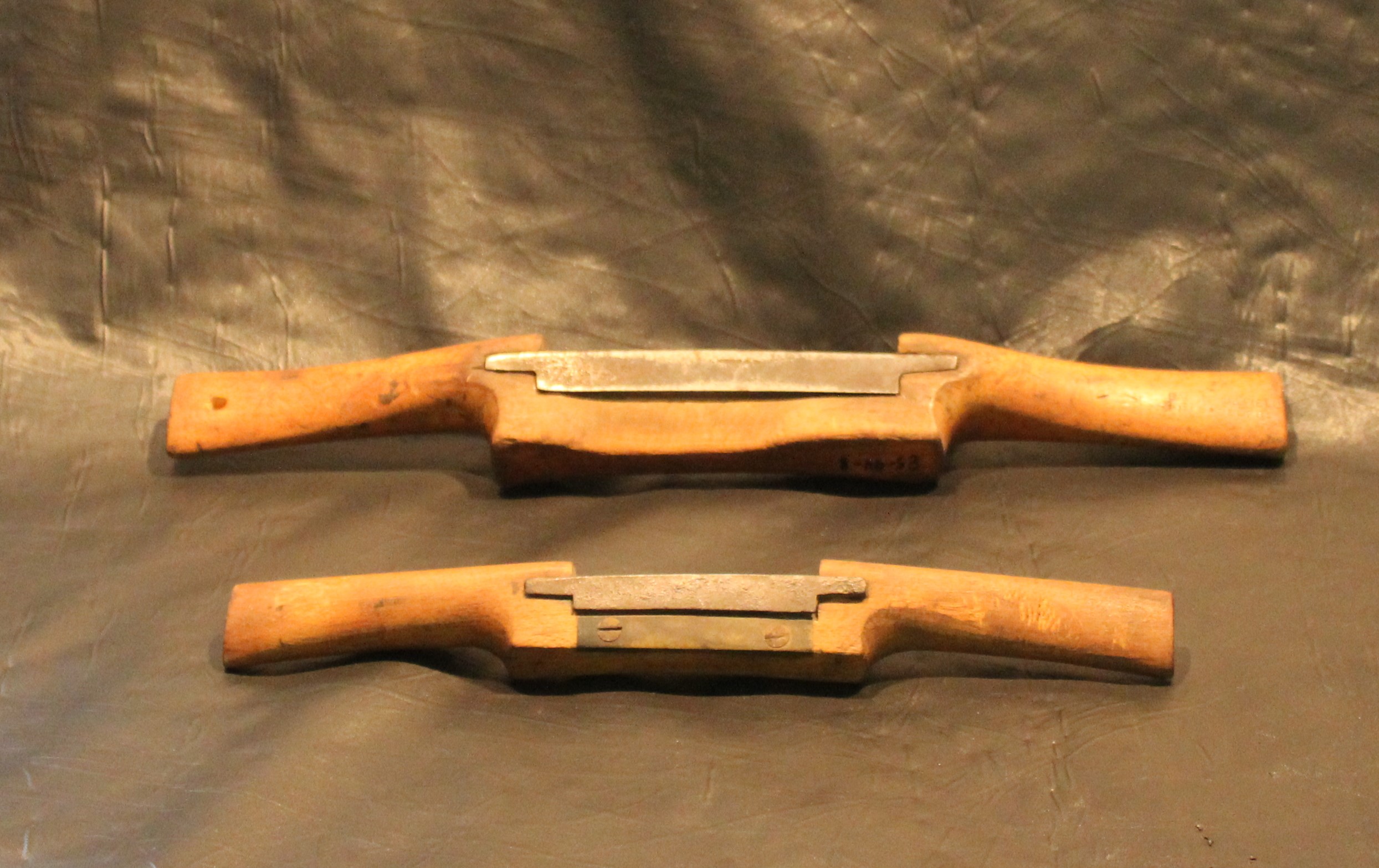Historic Tools of North Castle
Spokeshave Planes (2)
These tools at Smith’ Tavern are two slightly different sized wooden spokeshave planes. The spokeshave is a distant relative of the drawknife, in that it has a knifelike blade that is worked along a length of woodstock. Workers would push the tool away from them, so it is more similar to a plane than drawknife.
The tool consists of a wooden body with a steel blade. The blades have a flat cutter with two perpendicular tongues (called “tangs”). The tapered tangs are set into the body of the tool. Unfortunately, since they are held in place by friction alone, setting a wooden spokeshave precisely is a bit tricky, requiring taps on the ends of the tangs or on the bottom of the blade to shift it this way and that. The blade may also require frequent resetting, as the tangs may no longer sit as tightly in their mortises as they once did.
The spokeshave was used to smooth curves cut onto woodstock. It’s at its best when cleaning up cuts made by a band saw or jigsaw. For generations of woodworkers, however, the spokeshave was a multipurpose tool used for shaping the seats, backs and legs of chairs and in cabinetwork.
Reference: https://www.bobvila.com/articles/2102-spokeshaves/
Catalog Items:
Item T48 (Smaller Size)
| Location: | Panel 14 |
|---|---|
| Length: | 25 cm |
| Width: | 3 cm |
| Height: | 2 cm |
| Weight: | 92 g |
Item T48 (Larger Size)
| Location: | Panel 14 |
|---|---|
| Length: | 33 cm |
| Width: | 5 cm |
| Height: | 3 cm |
| Weight: | 198 g |
